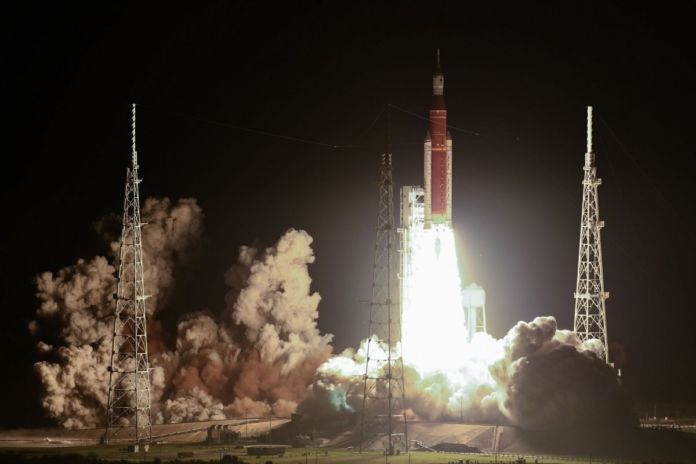1/5
The Space Launch System (SLS) rocket carrying an Orion spacecraft lifts off on the maiden flight of NASA’s Artemis Program from Complex 39-B at the Kennedy Space Center, Florida on Wednesday. Artemis I will travel 40,000 miles beyond the moon, capturing new images of Earth, the moon and the spacecraft exterior. Photo by Joe Marino/UPI | License Photo
Nov. 16 (UPI) — Before returning to Earth, NASA’s Artemis I will travel 40,000 miles beyond the moon collecting engineering data. Onboard cameras will capture images with new views of Earth, the moon and the Orion spacecraft. After several delays Artemis I blasted off early Wednesday morning from the Kennedy Space Center in Cape Canaveral, Fla. Advertisement
the Artemis mission “will land the first woman and first person of color on the moon,” according to NASA.
It will pave the way for a long-term lunar presence, which in turn will serve as a “steppingstone” to send astronauts to Mars.
RELATED NASA launches Artemis I rocket to the moon
The 24 cameras on the rocket and spacecraft are already capturing images. Four of those cameras will enable a selfie view of the spacecraft with Earth or the moon in the background, according to NASA.
As @NASA_Orion begins the #Artemis I mission to the Moon, the spacecraft captured these stunning views of our home planet. pic.twitter.com/Pzk3PDt7sd— NASA Artemis (@NASAArtemis) November 16, 2022
The images are expected to produce new perspectives on Earthrise.
“A lot of folks have an impression of Earthrise based on the classic Apollo 8 shot,” Melendrez said in a statement. “Images captured during the mission will be different than what humanity saw during Apollo missions, but capturing milestone events such as Earthrise, Orion’s farthest distance from Earth, and lunar flyby will be a high priority.”
Advertisement
The pictures will provide a new look at the spacecraft exterior as well.
“Each of Orion’s four solar array wings has a commercial off-the-shelf camera mounted at the tip that has been highly modified for use in space, providing a view of the spacecraft exterior,” Melendrez said.
A technology demonstration called Callisto on the spacecraft will use three in-cabin cameras to test video conferencing capabilities during Orion’s flight.




